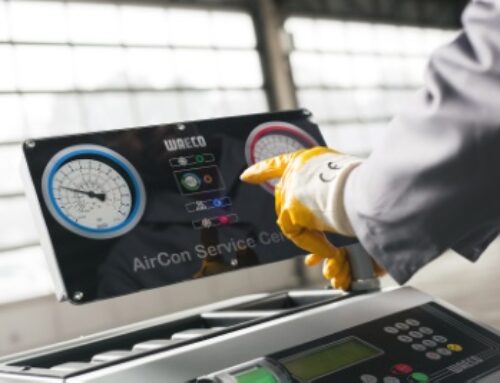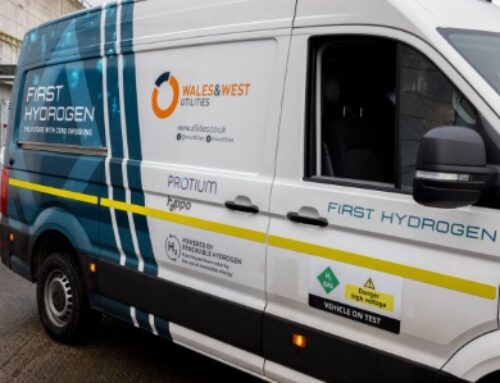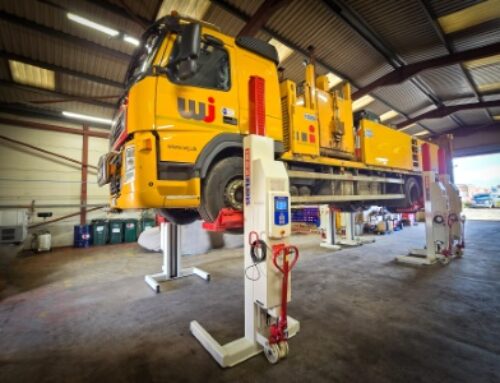Wabco talks winter testing
 This season, vehicle technology provider Wabco began its thirtieth winter testing programme at its proving ground located in Rovaniemi, Finland. The test track at the Arctic Circle, one of three owned by the company, is especially designed for commercial vehicle applications – allowing it to test and develop its systems under extreme climate and various road conditions.
This season, vehicle technology provider Wabco began its thirtieth winter testing programme at its proving ground located in Rovaniemi, Finland. The test track at the Arctic Circle, one of three owned by the company, is especially designed for commercial vehicle applications – allowing it to test and develop its systems under extreme climate and various road conditions.
Offering an area of 11 hectares with own braking and steep grade tracks, a handling course and heated asphalt surface, the proving ground is perfectly equipped for testing and optimising technologies and systems, Wabco says.
The area in the high north offers perfect conditions as well, says the firm: thanks to low friction values, stability control testing can be undertaken at both high and low speeds. From December to March, the Arctic Circle sees an average temperature of -30° C (-22 °F) – the perfect environment to simulate winter-typical track conditions in long-term tests.
In times of increasing digitalisation, new systems and technologies have opened new possibilities of simulating tests and growing process efficiency. So how important is real-life testing today?
Dr. Thomas Dieckmann (below), advanced development leader at Wabco, told us how real life testing has evolved over the past few years and its future role in system and solution development.
Q: Looking back at the past 30 years, how has the testing on proving grounds changed, in general and for winter testing in particular?
 A: Over the past years, modern development tools have paved the way for new testing processes. However, in terms of safety and durability, real life testing still plays vital role in developing and proving new functions, making sure systems are working 100 per cent correctly – especially when it comes to final releases and performance fine tuning.
A: Over the past years, modern development tools have paved the way for new testing processes. However, in terms of safety and durability, real life testing still plays vital role in developing and proving new functions, making sure systems are working 100 per cent correctly – especially when it comes to final releases and performance fine tuning.
And it’s needed to confirm that the systems comply with the high quality guidelines and ISO standards: this is only possible by testing systems at wheel adhesion and vehicle stability limits.
[Therefore] testing on proving grounds nowadays is more important than ever. Nevertheless, practical release trials are just a small [element] within a huge system of testing, growing more and more complex.Q: Which industrial developments and factors in the commercial vehicle sector impact the testing process?
A: First of all, the testing process has changed due to increased connectivity. A bigger amount of data can be exchanged in a shorter time. So all measured data is directly available online on the server and can be accessed and analysed by colleagues from anywhere in real time. This means, for example, fewer colleagues need to travel to our winter test track in Finland, and the staff on site can seek advice from Wabco experts from all over the world.
At the same time, commercial vehicle systems are getting more and more complex and connected resulting in more lines of code and software functions. Every operating status of the system, represented by a specific line of code, needs to be checked in order to ensure that the system runs safely under all circum stances.
stances.
In this context, software testing tools and HIL (hardware-in-loop) test benches have added powerful means to improve software quality. This way, technical problems such as software bugs can be detected and fixed even before the testing at the test track takes place.
In addition, there are specific conditions such as corroded pole wheels or certain rare vehicle setups, which cannot be tested on the test track. Therefore, you need to combine testing via software simulations and practical trials.
Moreover, the increasing electrification of the vehicles requires the testing of electrically-driven axles on low friction surfaces. For example, traction control functions on wheel-hub drives work differently than previously on diesel engines. So it’s also our task at Wabco to make sure electric buses stay stable when strong electric traction or recuperation on low friction surfaces is demanded.
Q: Has digitalisation made testing easier or more complicated? How does this impact your daily work?
It’s both. On the one hand testing has become more complicated because many components have to be tested via simulations or in various environments beforehand. On the other hand, it has become easier as test runs can be economised by running automated tests before using hardware in the loop.
For example, for Wabco’s Evasive Maneuver Assist (EMA), which we demonstrated last year, we used a model-based development to quickly find a suitable control algorithm that was finally refined and tuned in real life testing.
Q: How can the combination of virtual simulation and real-life testing affect future testing processes? Which potentials do you see?
As potential software bugs can be fixed [during] the course of the technical development, we will need even fewer release attempts, resulting in faster development circles and less rework on the test track.
So at the test track, we will have more time to focus on testing and refining new functionalities. And – of course – on the fine tuning of the system according to the expected performance defined by the customer. This way, we can make braking not only safe but also improve ‘the feel’ of the vehicle.











